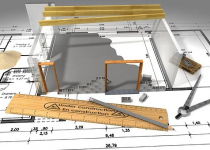Pressure Cleaning Sunshine Coast: DIY Pressure Cleaning Tips
The Sunshine Coast, with its stunning beaches and subtropical climate, is a place where residents take pride in their properties. To keep homes and businesses looking their best, many residents turn to pressure cleaning as an effective and efficient method for removing dirt, grime, mold, and stains from various surfaces.
While professional pressure cleaning services are widely available, some property owners may choose the do-it-yourself (DIY) route to save money and tackle their cleaning projects. In this article, we’ll provide you with essential DIY pressure cleaning tips to help you achieve optimal results while ensuring safety and protecting your property.
1. Safety First
Before you embark on a DIY pressure cleaning project, it’s crucial to prioritize safety. Pressure cleaning involves high-pressure water jets, and if not used correctly, it can pose risks to your health and the integrity of your property. Here are some safety measures to follow:
- Protective Gear: Wear appropriate protective gear, including safety goggles, closed-toe shoes, and hearing protection if the pressure washer is loud.
- Read the Manual: Familiarize yourself with the user manual for your pressure washer. It contains essential safety information and operating instructions specific to your equipment.
- Test on a Small Area: Before tackling a larger area, practice on a small, inconspicuous section to get a feel for the equipment and adjust the pressure settings accordingly.
- Keep a Safe Distance: Maintain a safe distance from the pressure washer’s nozzle to avoid injuries and damage to surfaces. Follow the manufacturer’s recommendations for the optimal distance.
- Avoid Electrical Hazards: Be mindful of electrical outlets, wiring, and fixtures when working with water. Ensure that electrical outlets and fixtures are properly covered to prevent water infiltration.
- Beware of Slippery Surfaces: Pressure cleaning can make surfaces slippery, so exercise caution while walking on wet areas. Place warning signs to alert others to potential slip hazards.
2. Choose the Right Pressure Washer
Selecting the right pressure washer for your DIY project is crucial. Pressure Cleaning Services come in various sizes and power levels, and the choice should be based on the scope of your project and the type of surfaces you’ll be cleaning. Here are some key considerations:
- PSI (Pounds per Square Inch): PSI is a measure of the pressure generated by the washer. Higher PSI values are suitable for tougher jobs, such as cleaning concrete driveways, while lower PSI washers are appropriate for more delicate surfaces.
- GPM (Gallons per Minute): GPM represents the flow rate of water. A higher GPM allows for more water output, which can be more efficient for cleaning larger areas.
- Fuel Source: Pressure washers can be powered by electricity or gas. Electric pressure washers are typically more suitable for smaller tasks, while gas-powered washers are more powerful and better for larger projects.
- Nozzles: Pressure washers come with various nozzle tips that control the angle and width of the water spray. Different nozzles are used for different cleaning tasks, so choose the appropriate one for your project.
3. Understand the Cleaning Process
To achieve the best results with DIY pressure cleaning, it’s essential to understand the cleaning process. Here’s a general step-by-step guide to follow:
- Preparation: Clear the area of obstacles, move outdoor furniture, and cover delicate plants and objects that cannot be moved. Ensure electrical outlets and fixtures are properly covered.
- Apply Cleaning Agents: Some cleaning projects may require the use of cleaning agents. Apply the appropriate detergent or cleaner to the surface to be cleaned. Be sure to follow the manufacturer’s instructions for the cleaning solution.
- Start from a Safe Distance: Begin pressure cleaning from a safe distance, gradually moving closer to the surface as needed. Avoid holding the nozzle too close to the surface initially, as high-pressure jets can damage certain materials.
- Maintain a Consistent Distance: As you work, maintain a consistent distance between the pressure washer’s nozzle and the surface. This ensures uniform cleaning and prevents streaks or damage.
- Overlap Strokes: Overlap your strokes by about 25% to ensure thorough and even cleaning. Keep the nozzle moving to prevent damage from concentrated pressure on a single spot.
- Rinse Thoroughly: After cleaning with detergents, thoroughly rinse the surface to remove any residue. Ensure that no cleaning agents are left behind.
- Practice Caution on Delicate Surfaces: When cleaning delicate surfaces like wooden decks, be cautious and use lower pressure settings. You can always test on a small area to ensure that the surface can handle the pressure.
4. Use the Right Cleaning Agents
Not all cleaning projects require the use of cleaning agents, but for those that do, it’s important to use the right cleaning solutions. Some surfaces benefit from a mild detergent or a specialized cleaning agent to remove mold, mildew, or stains. Always follow the manufacturer’s instructions for the cleaning solution and ensure that it’s compatible with your pressure washer.
5. Be Mindful of Water Usage
Pressure cleaning uses a significant amount of water. Be mindful of your water usage and local water restrictions, if applicable. Try to schedule your cleaning during non-peak hours to reduce the impact on the water supply. Additionally, consider using a broom or leaf blower to remove loose debris before pressure cleaning, which can help reduce water usage.
6. Clean Gutters and Drains
Pressure cleaning is an excellent opportunity to clean gutters and drains. Remove leaves, debris, and any clogs from gutters and downspouts to ensure proper water drainage. This helps prevent water damage and maintains the integrity of your property.
7. Practice Regular Maintenance
To prolong the life of your pressure washer and ensure it operates at its best, practice regular maintenance. This includes cleaning the filter, checking for leaks, and performing routine inspections. Follow the manufacturer’s guidelines for maintenance and storage.
8. Seek Professional Help for Complex Projects
While DIY pressure cleaning can be highly effective for many tasks, there are instances where it’s best to seek professional help. For complex projects involving potentially hazardous materials or delicate surfaces, consulting with a professional pressure cleaning company is a wise choice. They have the expertise, equipment, and safety measures to handle challenging jobs.
Conclusion
DIY pressure cleaning on the Sunshine Coast can be a rewarding and cost-effective way to maintain the appearance of your property. By following these tips and prioritizing safety, you can achieve professional-quality results and keep your home or business looking its best amidst the stunning coastal backdrop. However, always remember that when in doubt or faced with complex projects, professional pressure cleaning services are readily available to handle your cleaning needs.


